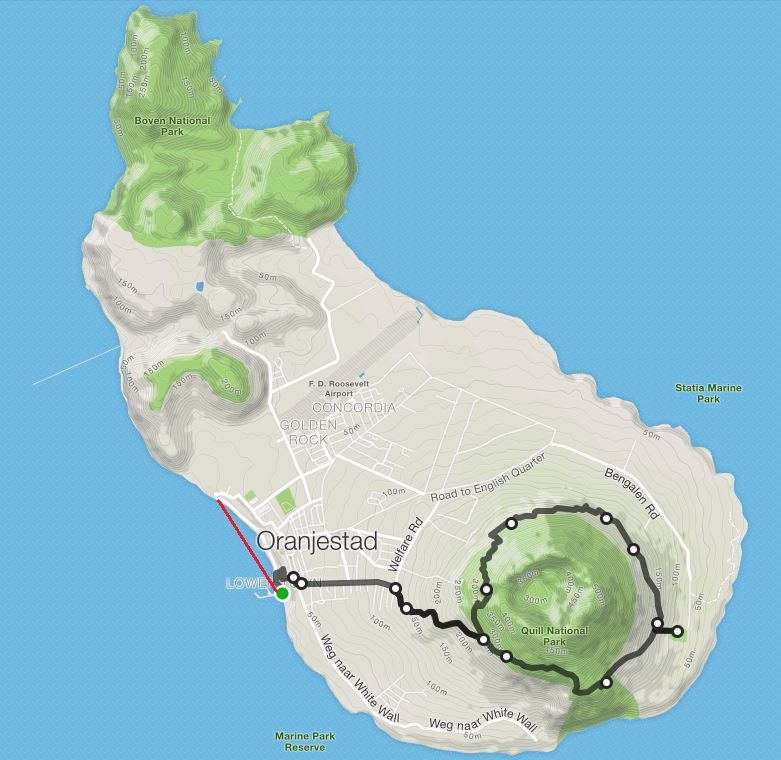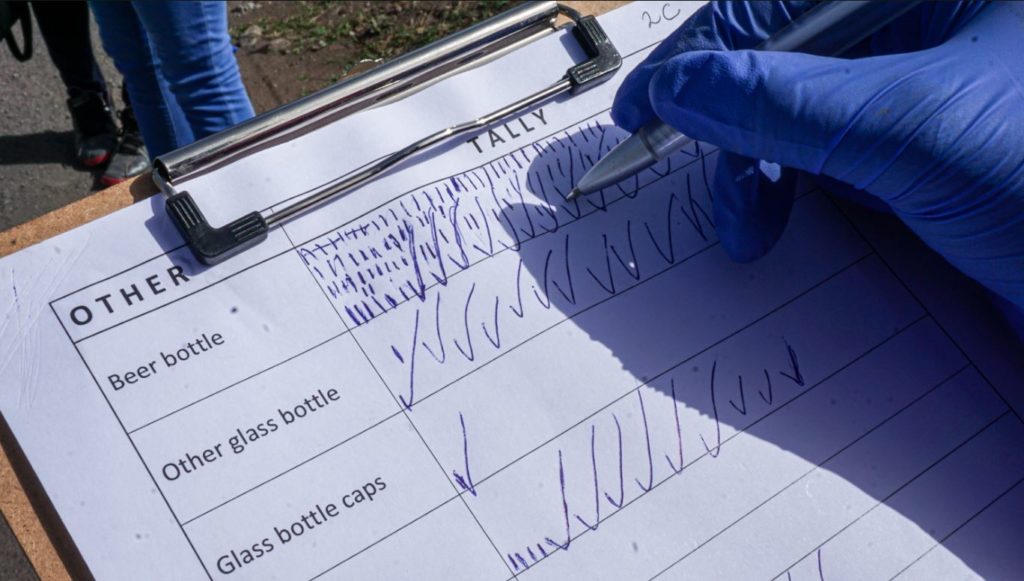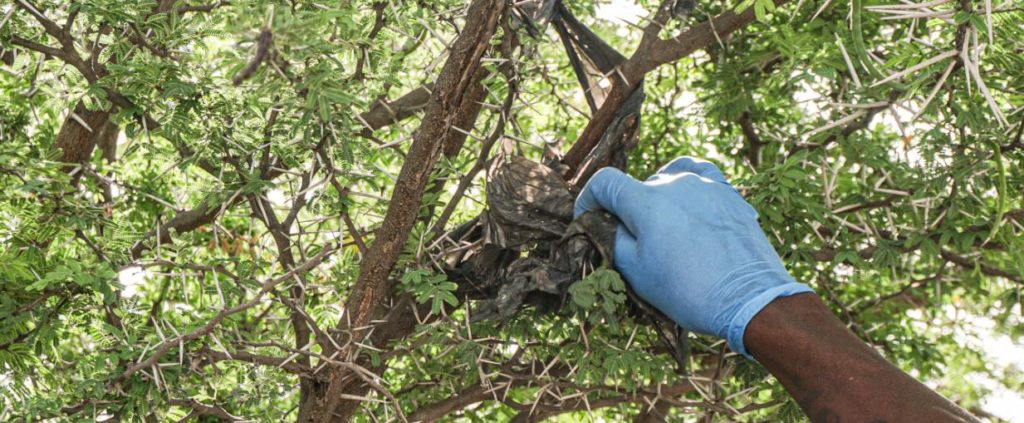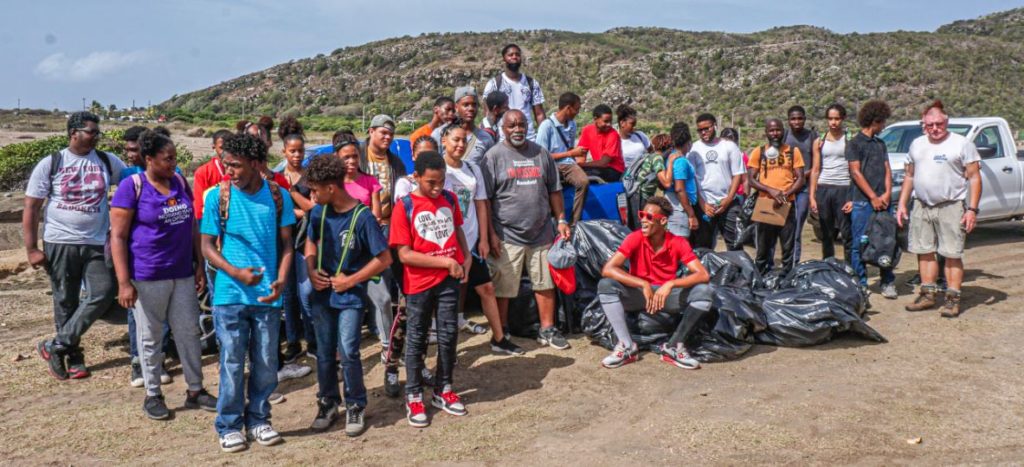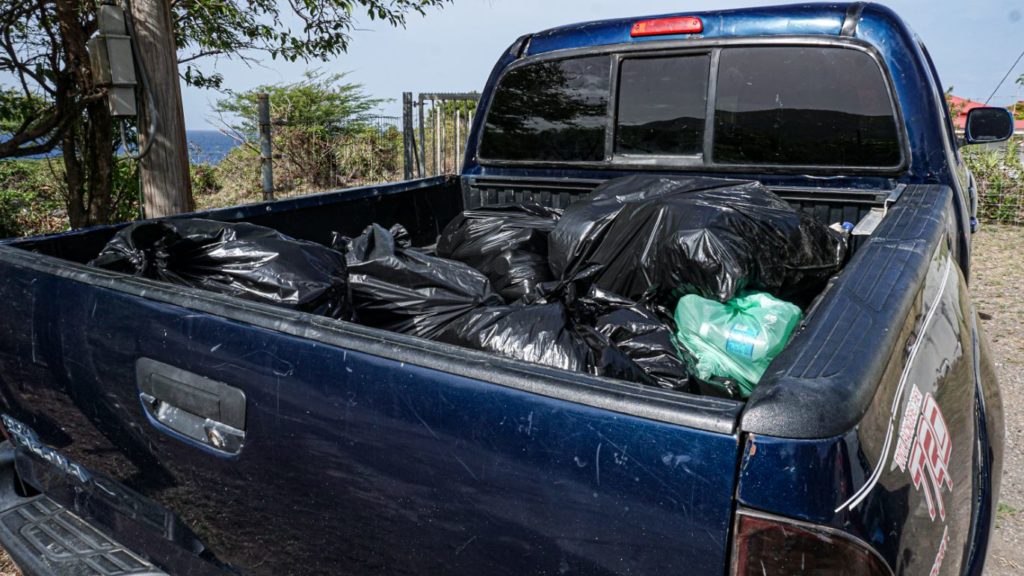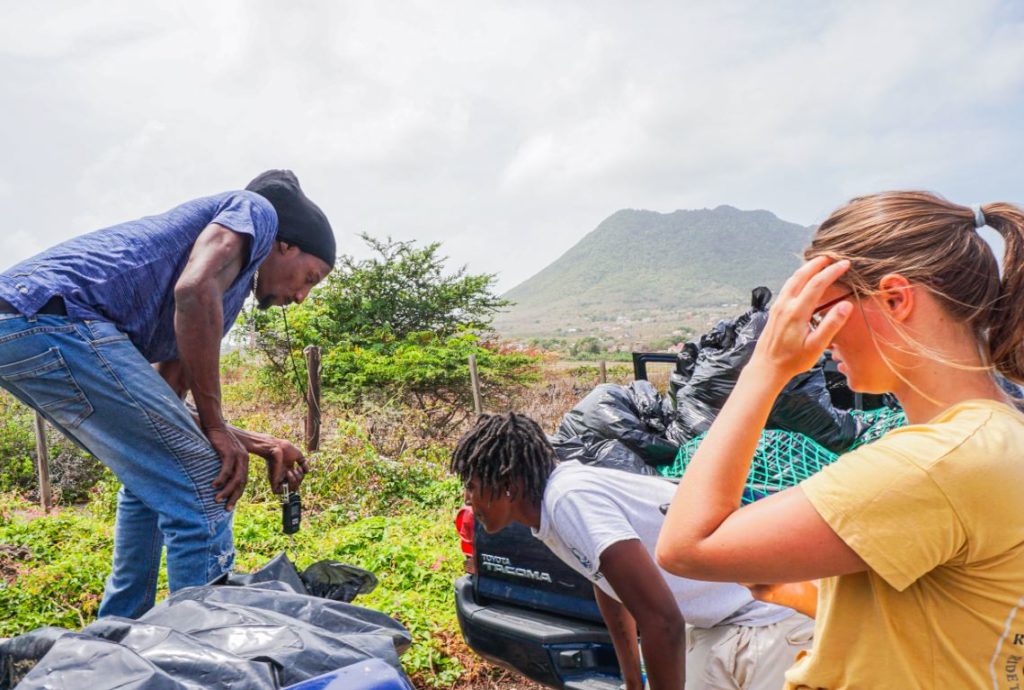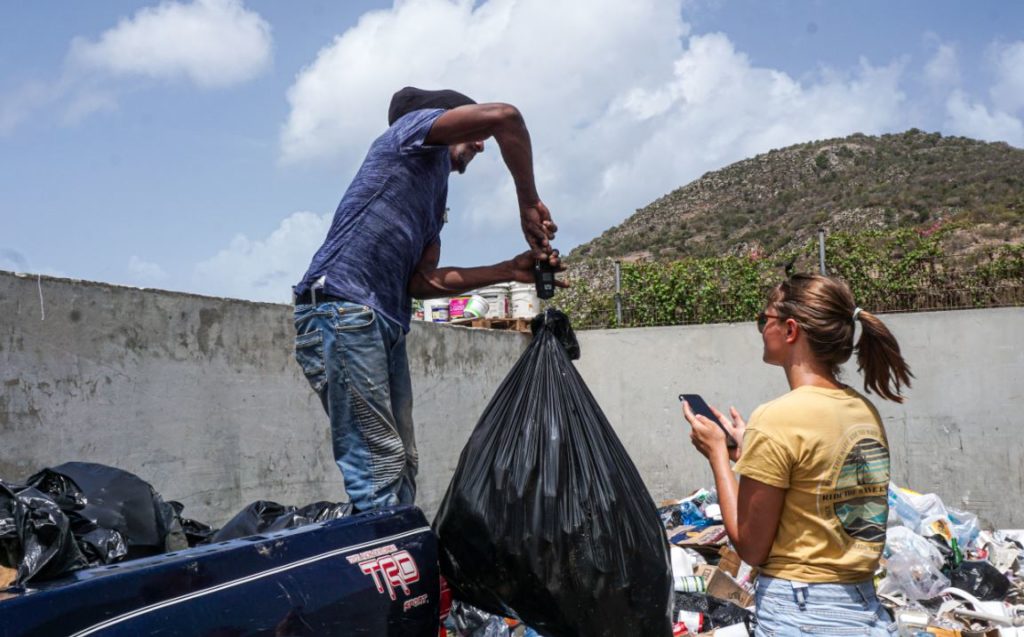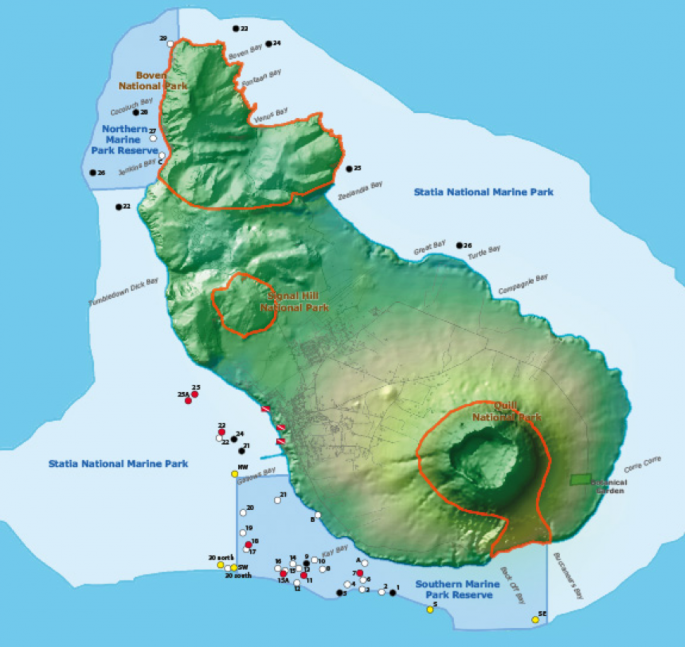Our Responsibility to Statia
Statia can be as beautiful, cherished, and respected as we want Her to be. Therefore, it is our responsibility to manage our waste, first and foremost, as individuals. Before anyone comes to clean the roadsides or collect from waste bins, we have to practice – ‘Housekeeping – A home for everything and everything in its home’.
Housekeeping can help both young and old Statians understand that there is a home for garbage and garbage should go in its home. By making a personal promise to keep garbage in its home, we can move towards a cleaner, more beautiful island.
Annual Clean Up 2020
To build on this recurring theme GVP and STENAPA asked each group of students to record what they collected during the clean up. Knowing what we tend to discard incorrectly can help us change our habits. They were also asked to place these items in specific garbage bags. This small exercise made them think of the correct home for what they collected.
The areas cleaned were Zeelandia Beach, Road to White Wall, Cottageweg (and part of Paramiraweg), Ruby Hassel Road and the Sports Hall. It was decided that it was best for the primary schools to skip this year. Therefore, the area covered was not as vast as 2019’s clean up. Thank you again to Christopher Woodley’s crew who assisted for the second year in a row with taking the garbage collected to Statia Waste Solutions.
We were able to determine that the most abundant garbage on the roads and beach are beer bottles. These were followed by plastic bottles. This speaks to a habit of enjoying a beverage and failing to put the empty bottle, and its cap, in its correct home.
Graph 1. The most abundant items collected at the 5 locations.
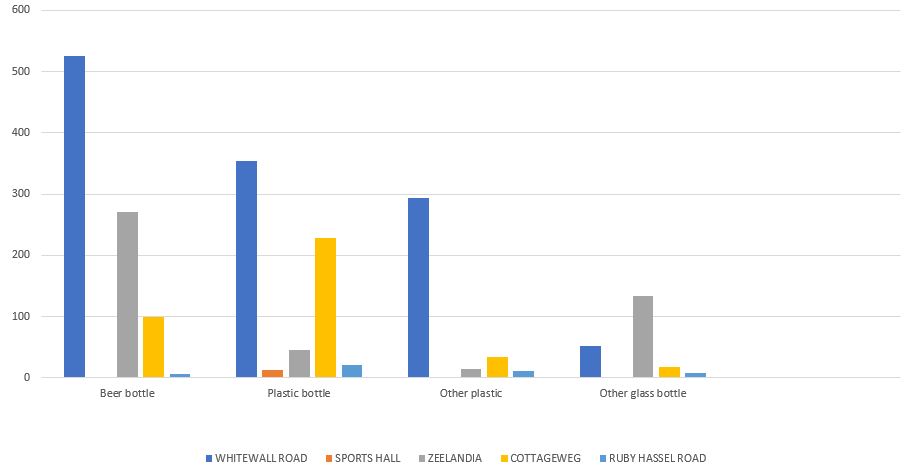
Other items collected would go through the same bad habit. Once it is no longer of use, it’s not discarded using its correct home – the garbage bins. The number of cigarette butts and other items were low in these five areas, but can become dominant in other areas. Remember, both the bottle and its cap need to go into the bin.
Graph 2. Abundance of the other items collected at the 5 locations.
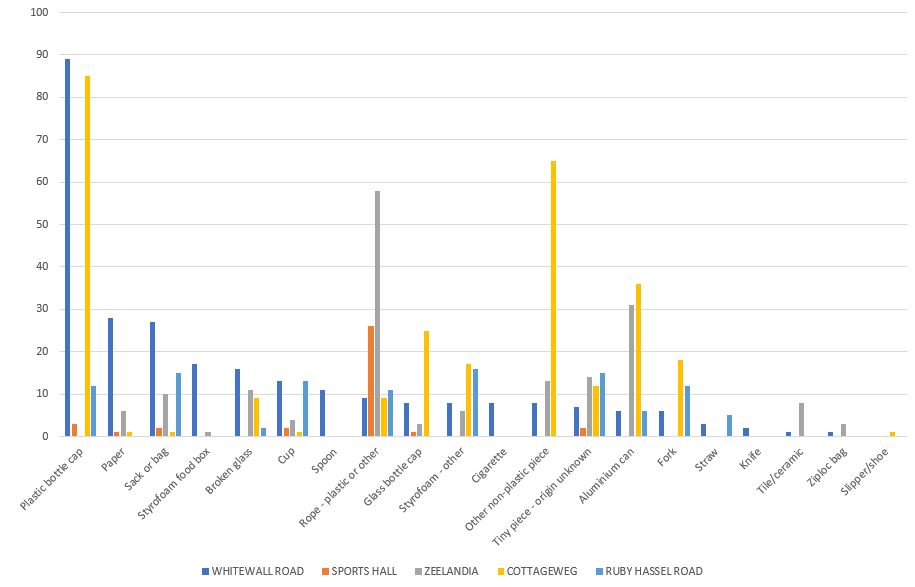
When the glass and plastic bottles are compared to the other items, we see what is making up most of the waste in these 5 locations.
The text is hard to read so focus on the super long bars. The third blue bar is all plastic bottles, and the following long blue bars are non-beer glass bottles and beer bottles. These numbers are significantly larger than the other items collected.
Graph 3. The abundance of everything found during the Annual Clean Up.
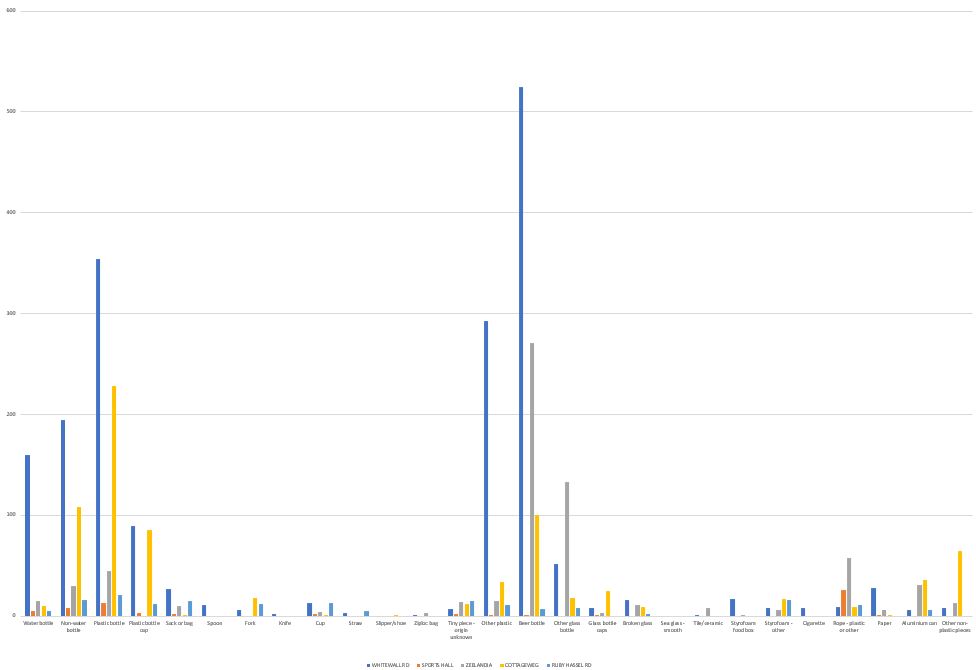
Single Use Plastics
The issue of single use plastic and styrofoam pollution, though currently eclipse by the beer bottles, still remains an large issue on the island. Recall, the plastic bottles were the second highest item found and was actually the most abundant item on Cottageweg. Single use utensils, styrofoam and plastic sacks can also have higher numbers based on the road cleaned.
Let’s Recycle
Place the your used glass bottle in the recycling bin instead of on the road side and it can be crushed and turned into this beautiful sea turtle stepping stone for Statia’s gardens.
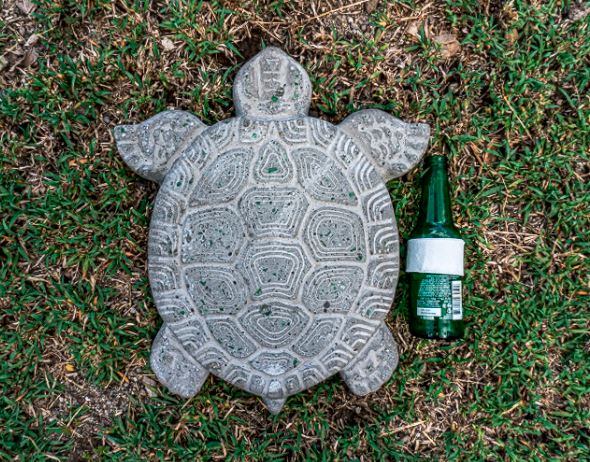
Done to order at $15 per path stone. Package deal for 5 stones at $70 total is available.
*
Mouth to Tail – 40 cm/1.3 ft
Flipper to Flipper – 33.5 cm/1.1 ft
Approx. 1kg/2lb
*
Created by: Statia Waste Solutions. The stepping stones are only available for purchase at STENAPA: +599 318 2884 or outreach@statiapark.org
*
Proceeds of every purchase of the sea turtle stepping stone goes directly towards the Sea Turtle Conservation Program on St Eustatius. Learn about the program here: youtu.be/iJMWbtc3gw4
Most of the garbage taken up during the Annual Community Clean Up is recyclable. Place them in its correct home and they will be repurposed, readded to the production cycle. Reuse and upcycle what you can and place the rest in the correct bin.
Take Personal Responsibility
Statia Waste Solution should only have to collect garbage from the bins. Cleaning crews need only cut the grass and remove leaves and stones that wash onto the road when it rains (and coralita from fences, etc). It is unnecessary work to separate garbage from their piles, the garbage that should have been placed in bins. In addition to that, the plastic and glass pieces cannot be separated entirely. The leaves and such could have been used as compost material, but the contamination means it will have to go to the incinerator instead. This is a potential goldmine wasted because we do not always place our garbage in its home.



